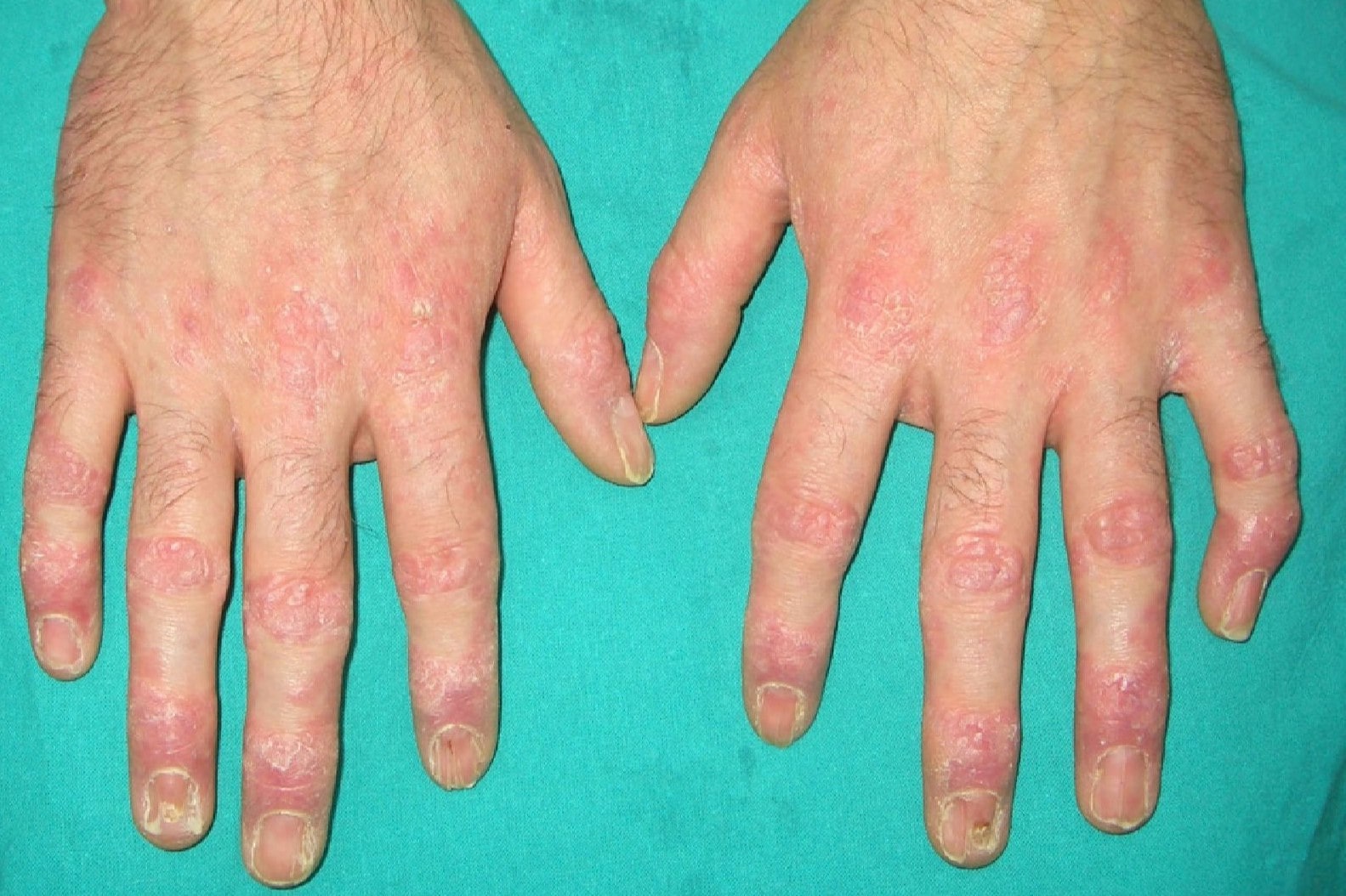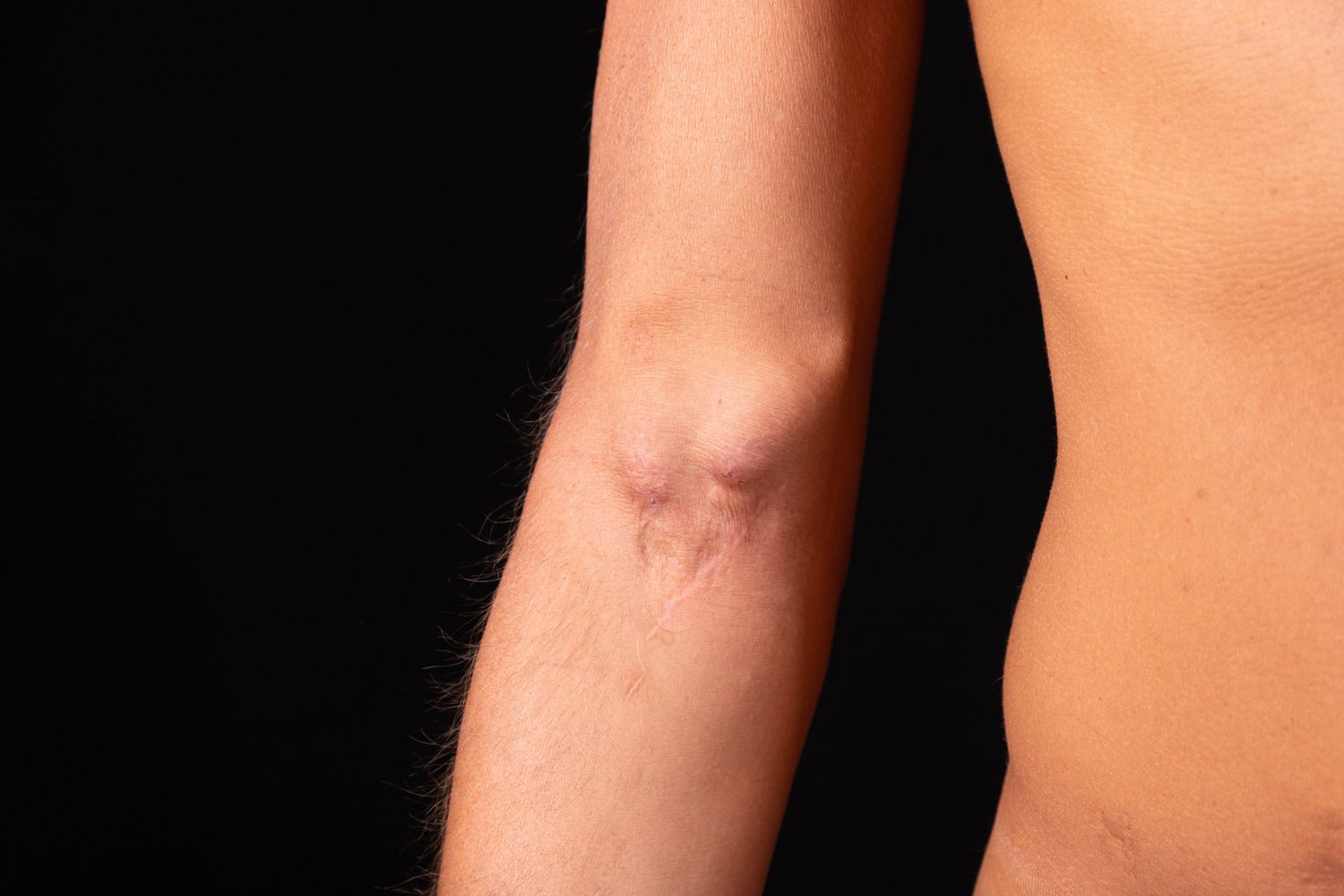
Florid Cutaneous Papillomatosis (FCP) is a rare skin condition marked by the sudden appearance of numerous warty bumps on the trunk and limbs. What makes FCP particularly concerning is its strong link to internal cancers, especially gastric adenocarcinoma. First described in 1978 by Schwartz and Burgess, FCP is considered an obligate paraneoplastic syndrome, meaning it always accompanies an underlying malignancy. The exact cause remains unknown, but it's believed that tumors release growth factors that trigger the skin changes. Diagnosing FCP involves distinguishing it from viral warts and other skin conditions through a detailed medical history, skin biopsy, and lab tests. Treatment focuses on addressing the underlying cancer, which often leads to significant improvement in skin lesions.
What is Florid Cutaneous Papillomatosis?
Florid Cutaneous Papillomatosis (FCP) is a rare skin condition marked by the sudden appearance of numerous warty growths. These growths often signal an underlying internal malignancy. Let's dive into some key facts about this intriguing condition.
-
Definition and History
Florid cutaneous papillomatosis was first described by Schwartz and Burgess in 1978. The term "florid" refers to the profuse and rapid growth of papules, while "cutaneous" indicates that the condition affects the skin. This condition is also known as Schwartz-Burgess syndrome. -
Clinical Presentation
The clinical presentation of FCP is characterized by the sudden appearance of numerous warty papules on the trunk and extremities. These papules are clinically indistinguishable from viral warts but lack the characteristic features of viral warts such as epidermal vacuolization, parakeratosis, or eosinophilic inclusions. The lesions can range in size from 2 mm to 1 cm in diameter and may be accompanied by pruritus (itching) in about half of the patients.
Association with Internal Malignancies
FCP is not just a skin condition; it often points to something more serious happening inside the body.
- Association with Internal Malignancies
FCP is an obligate paraneoplastic syndrome, meaning that it is always associated with an underlying internal malignancy. The most common type of cancer associated with FCP is gastric adenocarcinoma, which occurs in more than half of the patients. Other cancers that have been linked to FCP include intra-abdominal tumors such as cancer of the urinary bladder, biliary ducts, ovaries, and uterus; breast adenocarcinoma; squamous cell carcinoma of the lungs; and non-Hodgkin lymphoma.
Understanding the Pathophysiology
The exact cause of FCP remains a mystery, but scientists have some theories.
- Pathophysiology
The exact cause of FCP is unknown, but it is believed to be related to the release of growth factors by the tumor. These growth factors may stimulate the proliferation of keratinocytes, leading to the formation of numerous papules. The association of FCP with acanthosis nigricans and the sign of Leser-Trélat suggests a common pathogenic mechanism involving the release of hormones or growth factors from the tumor.
Histologic Findings
Examining the skin under a microscope reveals unique features that help differentiate FCP from other conditions.
- Histologic Findings
Histologically, the cutaneous papillomas in FCP are characterized by uniform hyperkeratosis, acanthosis, and papillomatosis. They lack the epidermal vacuolization, parakeratosis, or eosinophilic inclusions typically seen in viral warts. Ultrastructural evaluation, immunofluorescence tests, viral serologic tests, and DNA hybridization analyses have been negative for human papillomavirus (HPV), ruling out a viral origin for the condition.
Differential Diagnosis
Distinguishing FCP from other skin conditions is crucial for proper treatment.
- Differential Diagnosis
The main concern in the differential diagnosis of FCP is distinguishing it from viral warts. Although clinically the lesions may resemble viral warts, microscopic examination reveals distinct differences. The presence of a verrucous velvety pattern in malignant acanthosis nigricans can help in distinguishing it from FCP. Additionally, the sudden eruption of multiple seborrheic keratoses or the sign of Leser-Trélat may occur with acanthosis nigricans and FCP, making it challenging to distinguish between these conditions.
Epidemiology
FCP is rare, but understanding who it affects can help in early detection.
- Epidemiology
FCP is a rare disease, with only about 25 patients reported in the literature. It is almost twice as common in men than in women and is usually diagnosed in individuals aged 53-72 years, with a mean patient age of 58.5 years.
Prognosis and Treatment
The outlook for FCP patients depends largely on the underlying cancer.
- Prognosis
The prognosis for patients with FCP is closely tied to the prognosis of the underlying malignancy. Since FCP is always associated with an internal malignancy, the primary aim of treatment is to remove the cancer. Marked improvement of lesions has been reported after surgical treatment or chemotherapy of the cancer. There is no specific treatment for FCP itself, but symptomatic treatments such as topical steroids, oral retinoids, radiation therapy, topical 5-fluorouracil, urea, salicylic acid, and liquid nitrogen may be used to manage the skin lesions.
Symptoms and Signs
Recognizing the symptoms can lead to quicker diagnosis and treatment.
- Symptoms and Signs
The symptoms and signs of FCP include the rapid onset of numerous warty papules on the trunk and extremities. These papules may be accompanied by pruritus (itching) in about half of the patients. Hyperpigmentation of the skin, particularly in flexural areas, armholes, and inguinal folds, may also be present. The involvement of oral, perioral, and anogenital areas by multiple verrucous papules is common. Additionally, a diffuse velvety hyperkeratosis of both palms (tripe palms syndrome) may occur.
Diagnostic Workup
A thorough diagnostic process is essential for identifying FCP and its underlying causes.
- Diagnostic Workup
The diagnostic workup for FCP involves a thorough examination of the skin lesions and a detailed medical history to identify any underlying malignancy. Laboratory tests such as full blood cell count, electrolytes, liver enzymes, C-reactive protein, serum urea, and other relevant tests may be conducted to rule out other conditions. A skin biopsy is essential to differentiate FCP from viral warts and other skin conditions. Immunohistochemical staining may be used to identify any specific markers associated with the underlying malignancy.
Treatment Options
Managing FCP involves addressing both the skin lesions and the underlying cancer.
- Treatment
The primary aim of treatment for FCP is to remove the underlying malignancy. This may involve surgical resection of the tumor, chemotherapy, or radiation therapy. Symptomatic treatments such as topical steroids, oral retinoids, radiation therapy, topical 5-fluorouracil, urea, salicylic acid, and liquid nitrogen may be used to manage the skin lesions. Patients whose cancers are in remission should be monitored for any recurrence of FCP as this may indicate regrowth or growth of a new tumor.
Complications
FCP can lead to various complications, primarily due to the associated malignancy.
- Complications
The complications of FCP are largely related to the underlying malignancy. Patients with FCP are at a higher risk of developing complications such as weight loss, constipation, altered taste, and peripheral adenopathy or organomegaly. The involvement of multiple body areas by the skin lesions can lead to significant disfigurement and social exclusion.
Case Reports
Real-life cases provide valuable insights into the presentation and management of FCP.
- Case Reports
Several case reports have documented the association of FCP with various internal malignancies. For example, a case report described an 80-year-old man who presented with generalized wart-like skin lesions that were symmetrically distributed on the forearms and dorsal sides of hands. The lesions were accompanied by hyperpigmentation of the skin in flexural areas and involvement of oral, perioral, and anogenital areas by multiple verrucous papules. The patient was diagnosed with gastric adenocarcinoma and underwent treatment for the underlying malignancy, resulting in marked improvement of the skin lesions.
Dermatological Differential Diagnosis
Differentiating FCP from other paraneoplastic syndromes is essential for accurate diagnosis.
- Dermatological Differential Diagnosis
The differential diagnosis of FCP includes other paraneoplastic syndromes such as malignant acanthosis nigricans and the sign of Leser-Trélat. These conditions are also associated with internal malignancies and share similar pathogenic mechanisms. The sudden eruption of multiple seborrheic keratoses or the sign of Leser-Trélat may occur with acanthosis nigricans and FCP, making it challenging to distinguish between these conditions.
Psychological Impact
The psychological toll of FCP can be significant, affecting patients' quality of life.
- Psychological Impact
The psychological impact of FCP should not be underestimated. The rapid onset of numerous warty papules can lead to significant disfigurement and social exclusion. Patients with FCP may experience anxiety, depression, and decreased quality of life due to the physical and emotional burden of the condition.
Genetic and Environmental Factors
Exploring potential genetic and environmental influences on FCP.
-
Genetic Factors
There is no evidence to suggest that genetic factors play a role in the development of FCP. The condition is primarily associated with internal malignancies, and the genetic predisposition to these cancers is well-documented. -
Environmental Factors
There are no known environmental factors that contribute to the development of FCP. The condition is purely associated with internal malignancies and does not have any environmental triggers.
Prognostic Factors
Understanding what influences the prognosis of FCP can guide treatment decisions.
- Prognostic Factors
The prognosis for patients with FCP is closely tied to the prognosis of the underlying malignancy. Early detection and treatment of the cancer are crucial for improving the outcome of FCP. Patients whose cancers are in remission should be monitored for any recurrence of FCP as this may indicate regrowth or growth of a new tumor.
Future Research Directions
Ongoing research aims to uncover more about FCP and improve patient care.
-
Future Research Directions
Future research directions for FCP include identifying the specific growth factors or hormones released by the tumor that contribute to the development of the condition. Understanding the molecular mechanisms underlying FCP could lead to the development of targeted therapies for managing the skin lesions. Additionally, studies on the psychological impact of FCP could provide valuable insights into improving the quality of life for patients with this condition. -
Conclusion
Florid cutaneous papillomatosis is a rare and complex dermatological condition characterized by the rapid onset of numerous warty papules on the trunk and extremities. It is always associated with internal malignancies, particularly gastric adenocarcinoma, and is considered an obligate paraneoplastic syndrome. The diagnosis and management of FCP require a multidisciplinary approach involving dermatologists, oncologists, and other healthcare professionals. Early detection and treatment of the underlying malignancy are crucial for improving the outcome of FCP. Further research is needed to understand the molecular mechanisms underlying this condition and to develop targeted therapies for managing the skin lesions.
Understanding Florid Cutaneous Papillomatosis
Florid cutaneous papillomatosis (FCP) is a rare skin condition marked by the sudden appearance of numerous warty papules on the trunk and extremities. Always linked to internal malignancies, especially gastric adenocarcinoma, FCP serves as a critical indicator for underlying cancers. Histologically, these lesions differ from viral warts, showing uniform hyperkeratosis, acanthosis, and papillomatosis without viral markers. Diagnosing FCP involves a thorough skin examination and biopsy to rule out other conditions. Treating the underlying cancer often leads to significant improvement in skin lesions. While FCP itself has no specific treatment, symptomatic relief can be achieved through various topical and systemic therapies. Early detection and management of the associated malignancy are crucial for improving patient outcomes. Understanding FCP's unique characteristics and its strong association with internal cancers can aid in timely diagnosis and treatment, ultimately enhancing patient care.
Was this page helpful?
Our commitment to delivering trustworthy and engaging content is at the heart of what we do. Each fact on our site is contributed by real users like you, bringing a wealth of diverse insights and information. To ensure the highest standards of accuracy and reliability, our dedicated editors meticulously review each submission. This process guarantees that the facts we share are not only fascinating but also credible. Trust in our commitment to quality and authenticity as you explore and learn with us.


